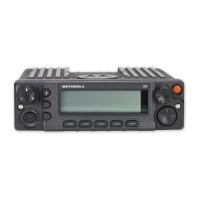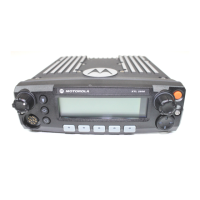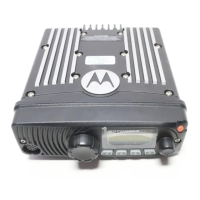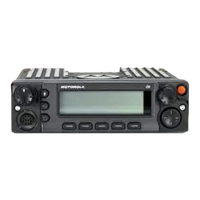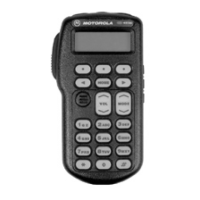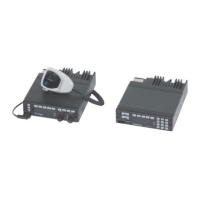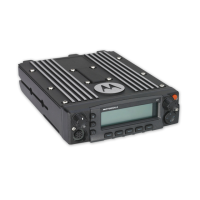6-9
space, starting at Y:FFF0. The ADSIC provides an 8kHz interrupt to the
DSP on IRQB for processing these microphone data samples.
As with the received trunking low-speed data, low-speed data is
processed by the MCU and returned to the DSP at the DSP SCLK port,
connected to the MCU port PA0.
For secure messages, the analog signal may be passed to the secure
module for encryption prior to further processing. The DSP transfers
the data to and from the secure module through its SCI port,
consisting of TXD and RXD. Configuration and mode control of the
secure module is performed by the MCU via the SPI bus.
The DSP processes these microphone samples, generates and mixes the
appropriate signalling, and filters the resultant data. This data is then
transferred to the ADSIC IC on the DSP SSI port. The transmit side of
the SSI port consists of SC2, SCK, and STD. The DSP SSI port is a
synchronous serial port. SCK is the 1.2MHz clock input derived from
the ADSIC, which makes it synchronous. The data is clocked over to
the ADSIC on STD at a 1.2MHz rate.
The ADSIC generates a 48kHz interrupt on SC2 so that a new sample
data packet is transferred at a 48kHz rate, and sets the transmit data
sampling rate at 48ksp. These samples are then input to a transmit
D/A converter, which converts the data to an analog waveform. This
waveform is actually the modulation out signal from the ADSIC port
VVO, and is connected directly to the VCO. The transmit side of the
transceiver is virtually identical to a standard analog FM radio.
Also required is the 2.4MHz ODC signal from the ABACUS IC.
Although the ABACUS IC provides receiver functions, it is important
to note that this 2.4MHz reference is required for all of the ADSIC
operations.
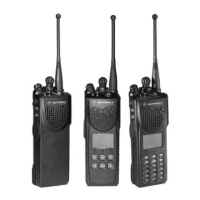
